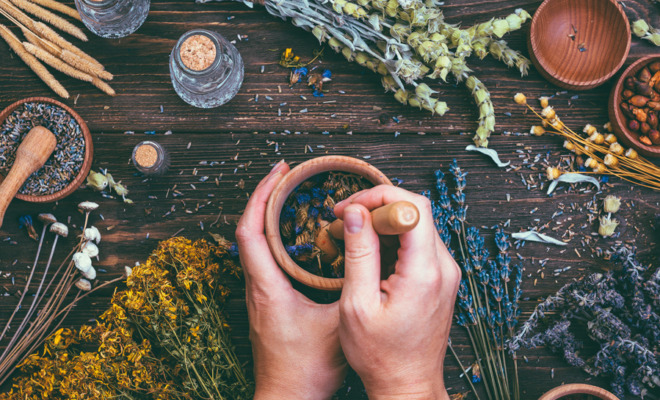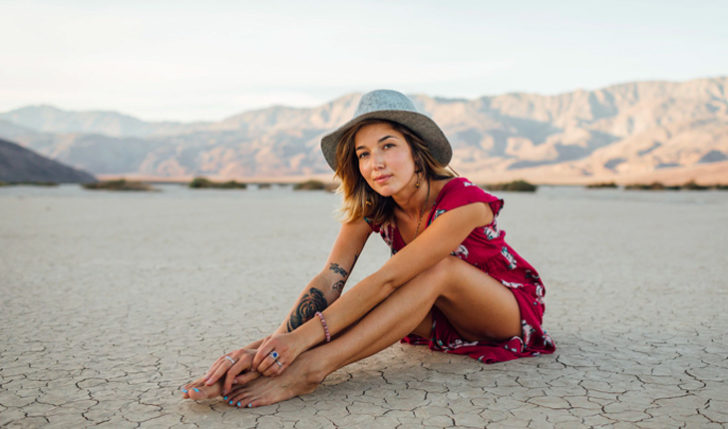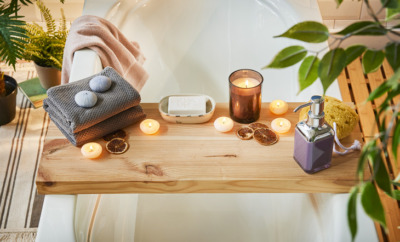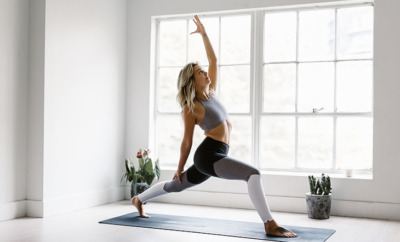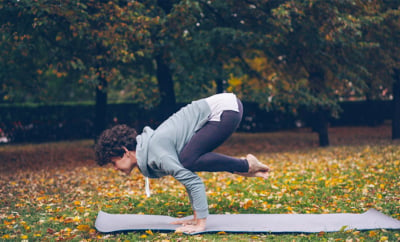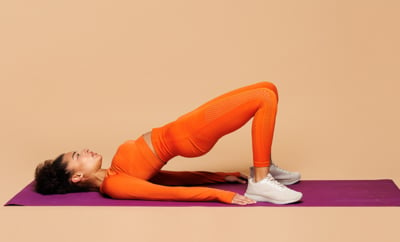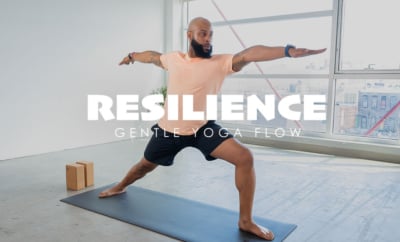Dry Brushing: Your Step-by-Step Guide Plus 5 Key Benefits of This Ayurvedic Practice
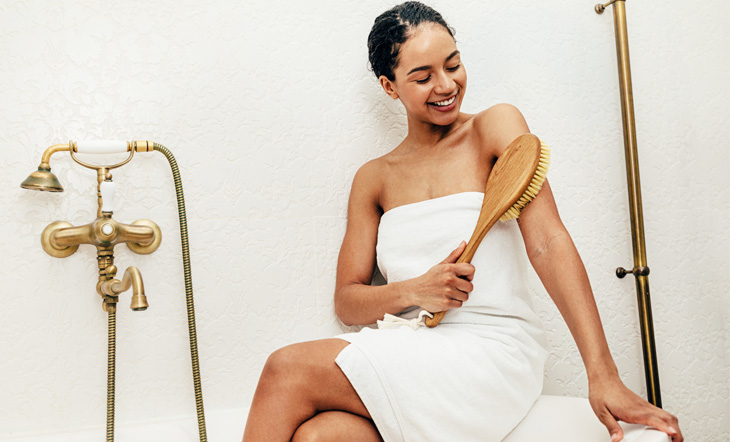
DryBrushing Feature
If you’re looking to add an energizing and healthy ritual to your morning routine, look no further! Dry brushing is a form of Ayurvedic medicine and the benefits of dry brushing are plentiful as it’s great for both the body and mind.
If you’re wondering exactly how to dry brush, and curious to learn more about the benefits, then read on!
What Is Ayurveda? Here’s a Crash Course in Everything You Need to Know
What Is Dry Brushing?
Dry brushing is a practice that has been used for centuries and has gained quite a bit of popularity in recent years thanks to its many benefits. It involves brushing your whole body using a special bristled tool that works to exfoliate the skin.
You rub a dry brush with coarse, natural-fiber bristles over your body in a particular pattern. The idea is that the coarse fibers will help to remove dead skin cells and improve the skin’s ability to eliminate toxins through the pores.
The benefits of dry brushing have not been studied scientifically, but anecdotal benefits have been sung about for centuries – both in and out of Ayurvedic cultures.
Here Are 5 Benefits of Dry Brushing:
While this hasn’t been scientifically studied, the benefits of dry brushing may include the following, according to Ayruveda.
1. Exfoliates the Skin
The coarse bristles have the ability to brush dry, dead cells away from your skin. This will leave your skin feeling softer and smoother.
2. Detoxifies the Body
Your lymphatic system works alongside your circulatory system and removes waste in your body. This is said to help detoxify the body. However, it really is still up for debate as to whether or not you need to manually stimulate circulation.
That being said, studies do show that improved circulation is better for your skin overall, regardless of how you get things moving.
3. Stimulates the Lymphatic System
The lymphatic system also helps to fight off infections. Fluids flow through your lymphatic system and are filtered out through the lymph nodes. (This is why your lymph nodes often become swollen when you’re sick.)
Dry brushing is thought to help the body release toxins through sweat. The brush bristles are said to stimulate the pores and open them up which makes it easier for the body to sweat. Thus, this reduces the amount of toxins moving through the lymphatic system.
Support Lymphatic System Health With This Lymphatic Workout
Try this unique movement class designed to stimulate the lymphatic system on YA Classes.
4. Relaxation and Self-Care
Any time spent focusing on yourself and your body is always a good thing. Dry brushing encourages you to spend a little quiet time focusing on the movement of the brush, your body, and how it feels.
This technique is similar to massage in the sense that it could help you feel relaxed and better connected to your body.
Need some more self-care in your life? Hit the Reset Button With These 7 Self-Care Rituals to Refresh and Revitalize Mind + Body
5. Could Help Break Down Cellulite
Women experience cellulite more than men. In general, cellulite has a rippled or cottage cheese type appearance.
Studies have shown that massage can help to temporarily reduce the appearance of cellulite. While there is no scientific proof that dry brushing can help reduce the appearance of cellulite, many people have claimed for centuries that it is helpful.
How to Dry Brush Step 1 – Here Are 3 Things to Consider When You Pick a Brush:
The first step to dry brushing is to find the right brush. Finding the brush that is perfect for you is highly subjective. There are three factors that you want to consider when choosing a brush: bristle stiffness, handle length, and vegan or non-vegan options.
1. Bristle Stiffness
You’ll want a brush with stiff bristles, but nothing too abrasive. If you are a beginner, try starting with softer bristles since you don’t yet know how your skin will react.
Boar hair brushes tend to be the coarsest where goat hair and many synthetic materials are on the softer side. Some brushes even come with ion-charged copper bristles weaved in, which you might want to avoid as a beginner because they are very coarse.
2. Handle Length
The length of handle that you choose really is a personal preference. It’s all about what fits you best!
Many people find it easier with a long handle to hit those hard-to-reach places, like your back. Others, however, say that they prefer the control of a hand-held brush.
There are many kits available which have both options along with brushes made specifically for the face that might be worth trying.
3. Vegan or Non-Vegan
Many dry brushes are made with boar or goat hair. But if you’re vegan, don’t worry! There are many options out there with synthetic bristles like nylon. Shop around so you can find the perfect option for you.
How to Dry Brush Step 2 – Follow These Steps to Get Brushing:
Dry brushing is done all over the body. While it can be done daily, if you are new to it, start slow. One to three times a week is effective and will allow your skin time to recover.
When you’re ready to start, you’ll want to be completely nude. It’s best to dry brush before a shower because you’ll lift up dead skin cells that you want to wash away.
Also, consider dry brushing inside your shower so that you don’t have skin flakes fall on your floor. Always avoid any sensitive areas where you have a rash or infection or your skin is broken.
1. Adjust the Pressure
Start off by pushing the brush with soft pressure and then work up to firmer pressure once you know how your skin will react.
If it hurts, use less pressure. Take care to only push softly on areas where your skin is thinner. You can press a little harder on thicker areas like the soles of your feet.
2. Work Your Way Up
Start at your feet. Brush the bottoms of your feet and then move up your legs in long, smooth strokes.
Next, repeat the process with your arms. Start with the palms of your hands and brush up toward your heart.
Then, move to your armpits and stomach. Brush these areas in a circular clockwise motion.
Next, brush your abdomen and back using circular motions.
Lastly, finish with your neck and décolletage. You’ll want to be gentle here as the skin is softer and more delicate. Start with your jawline and move down toward your heart.
Finish by going over your heart in a circular motion.
3. Repeat
Most people suggest brushing each area at least a few times.
4. Move Toward Your Heart
Always brush toward the center of your body – toward your heart.
5. Clean and Moisturize
After you shower, consider using a natural plant oil like coconut or olive oil to moisturize your skin.
6. Enjoy!
Enjoy the lovely glow of your skin!
The Takeaway on How to Dry Brush and the Benefits of Dry Brushing
As with any routine, stick with it! You’ll likely notice results if you are diligent. Be kind, be consistent, and always be grateful for what you have.
What are your favorite benefits of dry brushing? Let us know in the comments below!
All included information is not intended to treat or diagnose. The views expressed are those of the author and should be attributed solely to the author. For medical questions, please consult your healthcare provider.


This Month's Letter
From the Editor
Monthly motivation and food for
thought from our founder.

